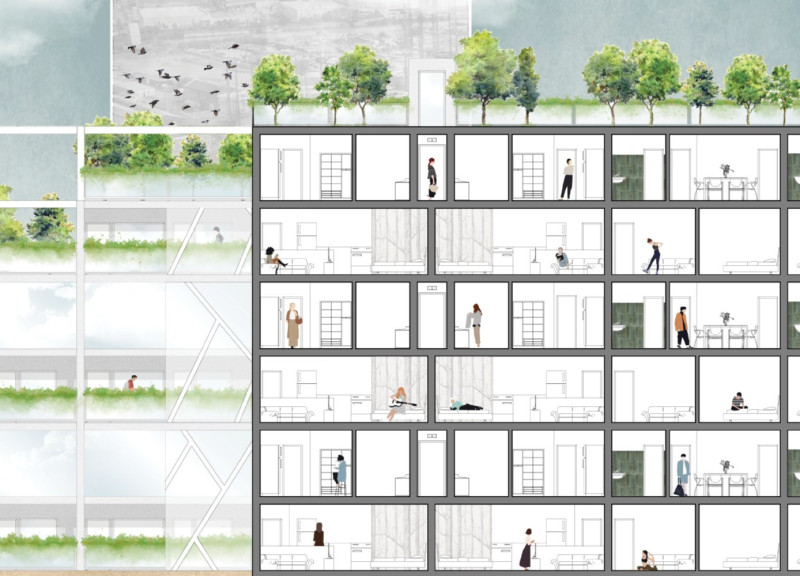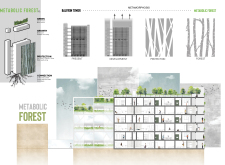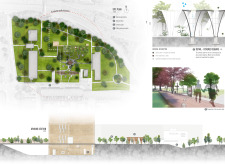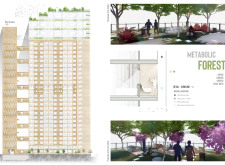5 key facts about this project
The project features a multi-function residential complex characterized by its innovative use of green infrastructure. It bridges the gap between architecture and nature, focusing on enhancing resident well-being, reducing environmental impacts, and creating a cohesive community. The design incorporates a variety of living units that cater to diverse demographics, thereby promoting inclusivity within the urban fabric.
Unique Design Approaches
One of the defining characteristics of the Metabolic Forest project is its integration of biophilic design principles. This approach incorporates natural elements into the architecture, facilitating a connection between residents and their environment. The extensive use of greenery is not merely decorative; it serves to improve air quality, provide insulation, and enhance mental well-being.
The architectural framework employs a combination of sustainable materials, including spruce and pine wood, concrete, and glass, ensuring durability while minimizing environmental impact. The use of glass allows for natural light penetration into living spaces, creating an inviting atmosphere while reducing reliance on artificial lighting.
The design incorporates communal areas strategically placed to encourage social interactions among residents. Terraced gardens, shared pathways, and outdoor gathering spaces promote a sense of community while enhancing the overall aesthetic appeal of the project. Rainwater harvesting systems are integrated into the design, underscoring the project’s commitment to sustainability and resource efficiency.
Architectural Features
The architectural features of the Metabolic Forest are centered around a central structure referred to as Balfron Tower. This feature not only serves as a focal point but also reflects the project's ethos of ecological integration. The tower is designed for adaptability, allowing for future modifications to accommodate changing resident needs and preferences.
Interior layouts prioritize flexibility, with various apartment types available to meet diverse lifestyles. Each unit incorporates green terraces, providing occupants with personal outdoor space, while enhancing biodiversity through carefully selected plant species. The overall design promotes a sense of ownership and connectivity, aligning with the project's broader goals of fostering a sustainable and engaged community.
For readers interested in delving deeper into the specifics of the Metabolic Forest project, including architectural plans, sections, and design insights, an exploration of these elements is encouraged. Understanding the comprehensive architectural ideas that underpin this project can provide valuable perspectives on contemporary approaches to sustainable urban development.


























